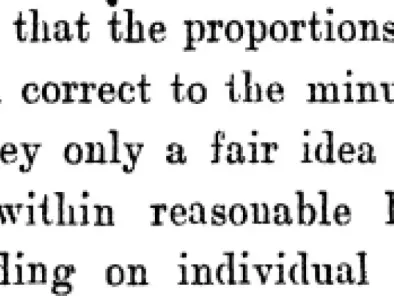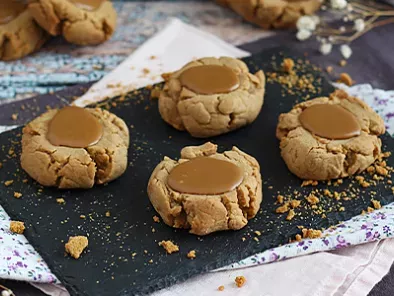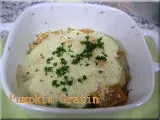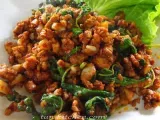Exploring the Romance of Bengali Sweets with J. Haldar

Haldar, J.1921. Bengal Sweets. Calcutta: Chuckervertty, Chatterjee &Co. Ltd.
Anybody interested in food history in general and sweet history in particular would know about Bipradas Mukhodhyay’s work Mistanna Pak( a two-volume set on sweets in Bengali ). I don’t know if this work has been translated. The first edition of Mistanna Pakwas published in 1301 (1904) and 1311 (1914). Another interesting book that appeared in a span of seven years was Mrs J. Haldar’s book Bengal Sweets. I chanced upon this book while browsing through National Library catalogue in Kolkata. This book was published by Chuckervertty, Chatterjee &Co. Ltd. The colonial past of the city and the library is reflected in the faded blue stamp of the Imperial library between the crisp yellow pages. The second edition of the book appeared in 1926.
Who is Mrs J. Haldar? In the preface to the first edition, she mentions that “the genesis of this little book can be traced to the “Notes and Queries” column of the Sunday editions of The Statesman” where she “contributed from time to time in response to the queries from all over India”. She thanks in particular the Anglo-Indian and European readers of her column who provided her with constant encouragement to put together the first edition. In the preface to the second edition, Mrs. Haldar is overwhelmed by the success of the first edition and mentions that “the book made its way not only to different parts of India but also to the United Kingdom”. She further writes, “Indeed I feel legitimate pride to learn that Rasogolla has been successfully prepared in far-off England with the help of this book and that Europeans stationed in this country have greatly enjoyed sandesh, themselves making the same”. In the preface to the second edition, she calls upon the readers to get back to her regarding ambiguity of the method of preparation or difficulty in comprehension. Such ambiguities are part of the recipe books churned out and may be in one of the subsequent post I will write about how to deal with such ambiguous recipes from Julian Barnes book The Pedant in the kitchen.
The book is divided into various sections. Two sections that are my personal favourite are “ The Romance of Bengali Sweets” and “Operations”. This book begins with an introduction to the role and significance of sweets in the everyday life of Bengal. In a fascinating chapter called “The Romance of Bengali sweets” she discusses in detail the metaphorical use of sweets in Bengali literature to its use and consumption across rituals and everyday life. She writes “Sweets have also been accepted as an emblem of hospitality by every stratum of society in every part of Bengal” (pp 2). She writes that a glass of water in the remotest and poorest households would be accompanied by jaggery or sugar candy and the wealth and prestige of an aristocratic household depends on the number of days the bhiyen is functional during festive occasions . She then moves on to discuss “The Confectionery of Bengal” where she gives a sweet tour of undivided pre-partitioned Bengal. She says, “Dacca is generally famed for Mithais of distinction and novelty; Burdwan for Sitabhog and Mihidana; Maldah for Khaja; Janai for Monohora; Natore for Kanchagolla; Murshidabad for Pantoah and Rasogolla; Krishnanagore for Sarpuriya and Sarbhaja;Muragachha for Chhanar Jilapi and so on” (Pp 6).
For Mrs Haldar, there are two categories of sweets; 1) Mithai and 2) Monda. The classifaction is based on milk and non-milk products. This classification comes as a departure from the previous classification of sweets which were primarily from three intermediate bases: a) flour, b) milk ( curdled milk pressed into chhana) and c) kheer (thickened milk). According to Haldar, Mithais are prepared from flour, pulse and Monda is prepared from milk. Though she does not discuss in detail the wooden, clay or stone moulds used in households or shops to give shape to sweets, she mentions that sweets in Bengal can be of any shape and size. After her discussion on classification of confectionery in Bengal she moves to a detailed discussion of pots and pans which clearly sets this recipe book different from former books. In Bipradas Mukhopadhyay’s book there is a section on “pak-patra”1 (meaning utensils for preparing the pak) but Mrs J. Haldar’s attention to the details of pots, pans and ladles require a special mention. For an user-friendly understanding, she divides the utensils into four categories. They are :- 1) pans 2) ladles 3) accessories 4) serving appliances 5) miscellaneous. While for household cooking various kinds of pans and accessories have now replaced some of them, still no sweat shops would be complete without a good pata – “ a wooden plank 3 ft long, 9 inches broad and 1 inch thick used as pastry board for rolling out dough on greased surface” (pp 10) or a taru – “ a wooden paddle with a broad thick blade” (ibid). In the next section she moved to discussing the ingredients. She not only lists the ingredients and their English equivalent but also the base of the ingredients and one such example is safeda or rice flour. Though rice flour can be prepared from any kind of rice, for safeda, a special variety of sunned rice called Kamini which has a nice fragrance is used. In the next section called Operations, Mrs Haldar guides a novice and an expert through techniques that are absolutely crucial in sweets. She calls it “Operations” and she begins with the ways to treat flour. One of the techniques that Bengali households working with maida will strongly recommend is “mayan deoa”. Mrs Haldar takes a novice cook through the technique of mayan deoa shortening. Apart from shortening she discusses kneading, forming, rolling out and shaping of sweets before moving on to discuss how to make pulp, paste and batter. This section is particularly useful and should be referred to particularly for some practical tips on preparing the batter of a certain consistency. Consistency of a batter is particularly crucial in coating and frying. While recipe books are generous in listing the ingredients to prepare the batter; at times the consistency is left unexplained while the pedant is left wondering why her/his food is not crispy as the food in the photo. The details of such techniques makes this book an interesting read and such tips are particularly useful in preparing non-sweet dishes as well. In the next section, she takes us through the methods of cooking, lists the various processes and explains them in detail. And the final rule that this age old recipe book tells us like no other book…

(Halder 1926: 25)
In the next section on Milk products, before moving on to discussing the various ways in which milk should be treated to prepare Chhana, Kheer and other intermediate bases she discusses the quality of milk and ways to ascertain it. One of the recipes she beautifully explains is sar- how to acquire that crisp layer of cream2. After this she moves on to discuss how to use sugar and prepare sugar syrup. Sugar Syrup is an important step in sweet making. Each sweet requires a different consistency, thickness and texture and some tips from this section for household preparation of the same is useful. Finally comes the prized section of recipes where she first lists recipes prepared from Flour, followed by milk primarily chhana.
But the best is her innovation Bengal Pudding prepared from a combination of chhana, khoa, sugar, egg, almonds, pistachios, almonds, raisin and rose-water. I had made a version of this when I had a sweet craving in the middle of the night last year. I loved the idea of combining chhana and eggs. I gave my own twist to this recipe. I prepared chhana from 500 ml Double Tonned Milk available in Mother Dairy Outlets. For those in Bengal please buy the chhana from the sweetshops. I squeezed the water and left it to cool and rest because I had plans of making chhanar dalna ( channa fritters cooked in a light gravy of cumin seed paste and ginger). I used this chhana that was resting in my fridge and kneaded it gently in circular motion with sugar till it mixed well. Took a lot of time but it was a pleasure to see the granules mix with the chhana grains. Try using castor sugar and let me know if it works. I skipped khoa ! I used 4 egg yolks. A fork was all that I had to beat the egg yolks till it was light and frothy . Can’t recall the time but my hand ached and I wondered why I was doing all of this when I am supposed to sleep. Talk about Bengali sweet tooth. I added this mix to the chhana mix and folded in gently. I cheated and added two drops of vanilla because I did not have almonds or pistachios. Finally I transferred this mix to an aluminium bowl (pre-greased with Jharna Ghee). It was time to wrestle with the steaming process. I thought of trying out my mother’s pressure cooker technique but I thought giving the good old technique of steaming a shot. I took my non-stick kadai and rested it on the burner and added boiling water and placed the aluminium pan with a lid and placed the good old iron tongs that I had picked up from the mother’s prized possessions. I paced up and down for 15 min to take the lid off and enjoyed a slice of mid night version of Bengal Pudding. The pudding tasted nice. It could have tasted much better. Next day I added some chocolate syrup and served to few unexpected guests and it echoed the same feeling that Mrs Haldar re-iterated in 1926.

And on that sweet note I take leave and will wait for your responses on sweets and more.. Till then indulge, cook and have fun!
Notes
1Pak is the Bengali word for condensing by heat. Across sweet industry in Bengal cooking the mix from which sandesh and various sweets are folded and or moulded is called pak.
2 See my earlier post onhttp://itiriti.wordpress.com/2011/12/29/invisible-hands-behind-sweet-industry-what-does-it-take-to-prepare-sar/
P.S. May be this book was the first recipe book of Bengali sweets penned in English as well.
©itiriti





